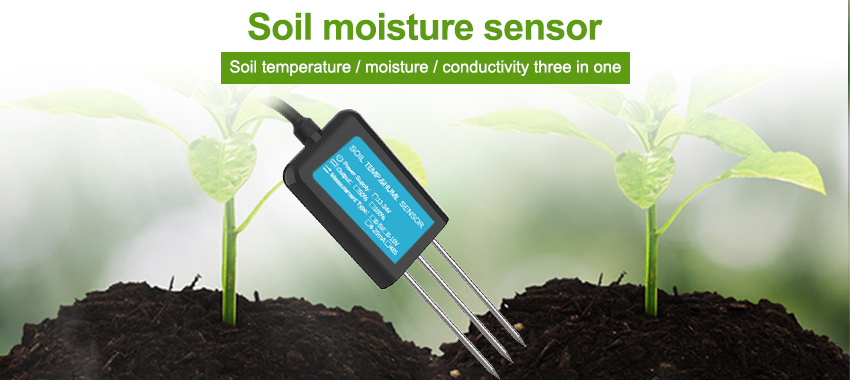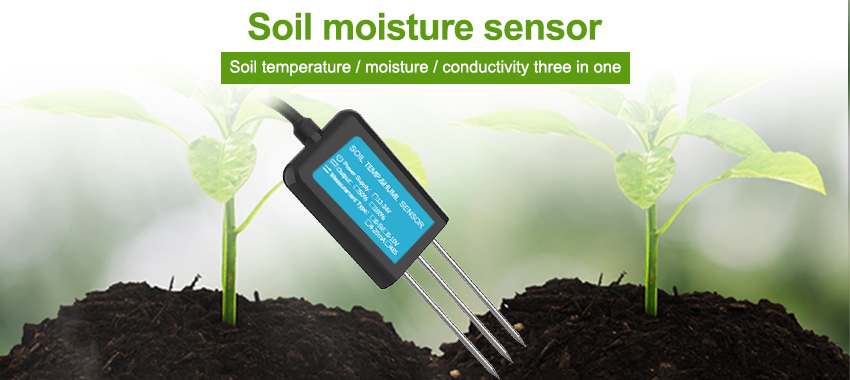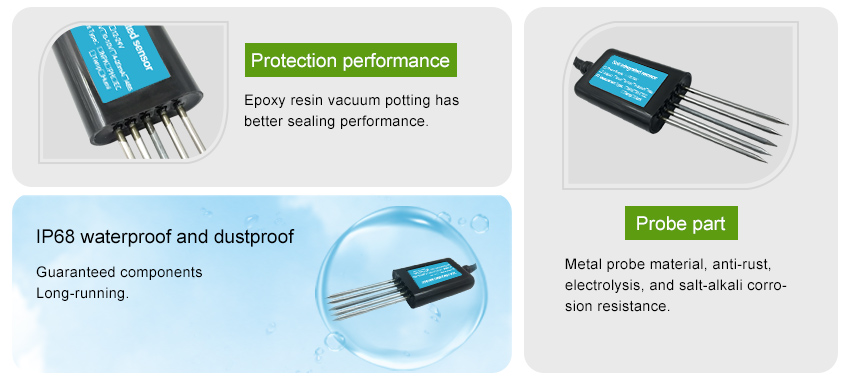
How to use soil sensors?
In this comprehensive guide, we will explore the different types of soil sensors available, their applications, and step-by-step instructions on how to use them effectively.

In this comprehensive guide, we will explore the different types of soil sensors available, their applications, and step-by-step instructions on how to use them effectively.
Soil sensors are valuable tools for monitoring and managing soil conditions in various applications, including agriculture, landscaping, and environmental research. These sensors provide real-time data on key soil parameters such as moisture content, temperature, and nutrient levels. In this comprehensive guide, we will explore the different types of soil sensors available, their applications, and step-by-step instructions on how to use them effectively. I. Types of Soil Sensors:
I. Types of Soil Sensors:
Moisture Sensors:
Moisture sensors measure the water content in the soil. They can be categorized into two types: volumetric water content sensors and tensiometers. Volumetric water content sensors use different technologies like capacitance, time-domain reflectometry (TDR), or frequency domain reflectometry (FDR) to measure the amount of water present in the soil. Tensiometers, on the other hand, measure the soil's ability to retain water by analyzing the soil's tension or suction.
Temperature Sensors:
Temperature sensors monitor the soil's temperature. They are crucial in determining the soil's microbial activity, plant growth, and nutrient availability. Temperature sensors can be inserted directly into the soil at different depths to obtain accurate readings.
Nutrient Sensors:
Nutrient sensors measure the concentration of essential nutrients in the soil, such as nitrogen, phosphorus, and potassium. These sensors use various techniques such as ion-selective electrodes or spectroscopy to detect and quantify nutrient levels. Monitoring nutrient levels helps optimize fertilization practices and prevent over or under-application of nutrients.
Electrical Conductivity Sensors:
Electrical conductivity sensors, also known as EC sensors, measure the soil's ability to conduct electricity. EC is a useful indicator of soil salinity and can help determine the soil's fertility and potential for crop growth. These sensors are often used in precision agriculture to assess soil quality and make informed irrigation decisions.
II. Steps to Use Soil Sensors:
Select the Right Sensor:Choose a soil sensor based on your specific needs and the parameters you want to monitor. Consider factors such as the type of soil, depth of measurement, and environmental conditions.
Install the Sensor:
Follow the manufacturer's instructions to correctly install the sensor in the soil. Ensure that the sensor is placed at the desired depth and in an area representative of the entire field or plot.
Calibrate the Sensor:
Calibration is essential to ensure accurate measurements. Each sensor type may have different calibration procedures. Refer to the manufacturer's guidelines for proper calibration techniques. Calibration typically involves setting baseline values and adjusting the sensor accordingly.

Connect to Data Logger or Display Unit:
Most soil sensors require connection to a data logger or display unit to collect and interpret the data. Follow the manufacturer's instructions to connect the sensor to the appropriate device.
Monitor and Record Data:
Once the sensor is installed and connected, it will start collecting data. Monitor the data regularly and record the readings at specific intervals. This data can be used to analyze trends, make informed decisions, and optimize soil management practices.
Interpret and Analyze Data:
Use data analysis techniques to interpret the sensor readings. Look for patterns and correlations between different soil parameters. This analysis will help identify areas of concern, optimize irrigation schedules, and adjust nutrient application rates.
Maintain and Troubleshoot:
Regularly inspect and maintain the sensor to ensure accurate and reliable measurements. Clean the sensor probes, replace any damaged parts, and check for any signs of malfunction. Consult the manufacturer's troubleshooting guide if you encounter any issues.
III. Applications of Soil Sensors:
Agriculture:
Soil sensors play a vital role in precision agriculture, enabling farmers to optimize irrigation, fertilization, and crop management practices. By monitoring soil moisture, temperature, and nutrient levels, farmers can make data-driven decisions to promote optimal crop growth and minimize resource wastage.
Landscaping:
In landscaping applications, soil sensors help ensure proper irrigation and maintenance of lawns, gardens, and green spaces. By monitoring soil moisture levels, landscapers can determine when to water and prevent over or under-irrigation, thereby conserving water resources and maintaining healthy plant growth.
Environmental Research:
Researchers and environmentalists use soil sensors to monitor soil conditions in various ecosystems. This data aids in studying soil erosion, land degradation, and the impact of climate change on soil health. Soil sensors also provide valuable insights into soil remediation efforts and ecological restoration projects.
Conclusion:
Soil sensors are powerful tools for monitoring and managing soil conditions in agriculture, landscaping, and environmental research. By accurately measuring parameters such as moisture content, temperature, and nutrient levels, these sensors enable data-driven decision-making and optimal resource utilization. By following the steps outlined in this guide, users can effectively deploy soil sensors and leverage their benefits in various applications. As technology continues to advance, soil sensors will continue to play a crucial role in sustainable soil management practices and contribute to a greener and healthier environment.